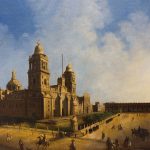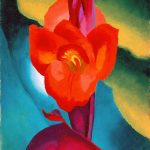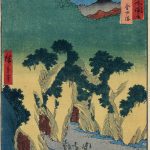Georgia O’Keeffe and Alfred Stieglitz, two towering figures in the world of art, had a partnership that was as creatively fruitful as it was personally intense. Their relationship began in 1916 when Stieglitz, a prominent photographer and gallery owner, received some of O’Keeffe’s charcoal drawings through a mutual friend. He was immediately struck by the raw power and originality of her work. Stieglitz later said, “At last, a woman on paper.” This simple, yet profound, statement marked the beginning of a partnership that would last for decades.
O’Keeffe, who was then teaching art in Texas, was initially reluctant to meet Stieglitz. She knew of his reputation as a formidable figure in the New York art scene and was wary of becoming just another artist in his circle. However, curiosity and mutual respect eventually brought them together. Their first meeting was electric. Stieglitz, 23 years her senior, was captivated by O’Keeffe’s strong sense of self and her unique artistic vision. O’Keeffe, in turn, was intrigued by Stieglitz’s passion for art and his innovative approach to photography.
Their relationship quickly evolved from professional admiration to a deep personal connection. Stieglitz began to photograph O’Keeffe, creating some of the most intimate and revealing portraits ever taken of an artist. These photographs captured O’Keeffe in various states of undress, breaking the conventions of the time and showcasing her as both a strong, independent artist and a vulnerable human being. This duality would become a hallmark of their relationship, both in art and in life.
A Marriage of Equals
In 1924, O’Keeffe and Stieglitz married, solidifying their partnership. Their marriage was far from conventional, reflecting their modernist views and artistic lifestyles. They maintained separate residences and studios, which allowed each to pursue their work independently. This arrangement also reflected their belief in the importance of personal space and creative freedom. They spent significant time apart, especially after O’Keeffe began spending more time in New Mexico, a place that profoundly influenced her work.
Their marriage was marked by both collaboration and competition. Stieglitz was not just O’Keeffe’s husband but also her mentor and promoter. He introduced her to the New York art world and helped arrange exhibitions of her work. However, O’Keeffe was determined to forge her own path. She did not want to be seen merely as Stieglitz’s protégé. This drive for independence sometimes led to tension between them, but it also pushed both to new creative heights.
Stieglitz’s influence on O’Keeffe’s work is undeniable. His photographs of her, often stark and unembellished, highlighted her unique features and intense gaze, helping to shape her public image. On the other hand, O’Keeffe’s paintings, with their bold colors and abstract forms, inspired Stieglitz to experiment with new techniques in his photography. Their artistic dialogue enriched both their oeuvres, making their partnership one of the most productive in the history of modern art.
Despite the challenges, their marriage endured for more than two decades. They were deeply committed to each other, both personally and artistically. Their letters, which number in the thousands, reveal a relationship built on mutual respect, admiration, and love. These letters provide a window into their thoughts and emotions, offering valuable insights into their creative processes and the nature of their bond.
Artistic Influences and Innovations
Stieglitz and O’Keeffe were both innovators in their respective fields. Stieglitz, often considered the father of modern photography, was instrumental in elevating photography to the status of fine art. His work was characterized by a focus on composition, texture, and the play of light and shadow. He believed that a photograph should capture the essence of its subject, an idea that influenced many of his contemporaries and successors.
O’Keeffe, on the other hand, is best known for her large-scale paintings of flowers, New York skyscrapers, and New Mexico landscapes. Her work is often seen as a bridge between realism and abstraction. She had a unique ability to capture the essence of her subjects with bold colors and simplified forms. Her flower paintings, in particular, are celebrated for their ability to convey both the delicacy and power of nature.
Their artistic influences on each other were profound. Stieglitz’s approach to photography, with its emphasis on capturing the spirit of the subject, resonated with O’Keeffe. She applied this idea to her own work, striving to go beyond mere representation to capture the underlying essence of what she saw. In turn, O’Keeffe’s bold use of color and form inspired Stieglitz to experiment with his photographic techniques, pushing the boundaries of what was considered possible in the medium.
Their innovations were not limited to their individual work. Together, they created a new dialogue between painting and photography, challenging traditional boundaries and redefining what art could be. Their exhibitions often featured their works side by side, inviting viewers to see the connections and contrasts between their mediums. This interplay between painting and photography enriched the art world and opened new possibilities for future generations of artists.
The New York Art Scene
The New York art scene of the early 20th century was a vibrant and dynamic environment. Stieglitz was at the center of it, running the famous 291 Gallery, which showcased avant-garde artists from both Europe and America. He was a tireless advocate for modern art, promoting the works of artists like Picasso, Matisse, and Duchamp. His gallery was a hub of artistic activity and a meeting place for artists, writers, and intellectuals.
O’Keeffe’s arrival in New York coincided with a period of great change and experimentation in the art world. She quickly became a key figure in Stieglitz’s circle, which included other prominent artists and thinkers. Her work was well received, and she gained recognition as one of the leading painters of her generation. Her bold, modernist style stood out in a city that was embracing new ideas and breaking away from traditional norms.
Stieglitz’s support was crucial to O’Keeffe’s success. He organized solo exhibitions of her work at his gallery, helping to establish her reputation. He also introduced her to influential critics and collectors, many of whom became avid supporters of her work. However, O’Keeffe was not content to rest on her laurels. She continued to push herself, exploring new themes and techniques in her paintings.
The New York art scene was also a place of intense competition and rivalry. O’Keeffe and Stieglitz were both keenly aware of this and used it to their advantage. Their relationship, with its mix of collaboration and competition, mirrored the larger dynamics of the art world. They challenged each other to be better, to innovate, and to push the boundaries of their respective mediums.
New Mexico: A New Chapter
In the late 1920s, O’Keeffe began spending more time in New Mexico, a place that would become central to her work. The vast landscapes, vibrant colors, and unique cultural heritage of the region captivated her. She found inspiration in the desert, the mountains, and the sky, creating some of her most iconic paintings during this period. New Mexico offered her a sense of freedom and solitude that was essential for her creative process.
Stieglitz, who preferred the bustling energy of New York, visited O’Keeffe in New Mexico but did not share her deep connection to the place. Their time apart, while difficult, allowed both to focus on their work and develop independently. O’Keeffe’s paintings from this period are characterized by a new sense of space and light, reflecting the influence of the Southwestern landscape.
O’Keeffe’s move to New Mexico marked a new chapter in her career. She built a house in Abiquiú and later another at Ghost Ranch, where she lived and worked for the rest of her life. These places provided her with the isolation and inspiration she needed to create. Her paintings from this period include some of her most famous works, such as “Cow’s Skull: Red, White, and Blue” and “Black Mesa Landscape.”
Stieglitz continued to support O’Keeffe’s work from afar, arranging exhibitions and promoting her paintings. However, their relationship evolved as they spent more time apart. They remained deeply connected, but their letters from this period reflect a new phase in their partnership, one that was built on mutual respect and a shared commitment to their art.
Legacy and Influence
The legacy of Georgia O’Keeffe and Alfred Stieglitz is profound and far-reaching. As individuals, they were pioneers in their fields, pushing the boundaries of what was possible in painting and photography. Together, they created a body of work that continues to inspire and influence artists around the world.
O’Keeffe’s influence is particularly evident in the way she captured the American landscape. Her paintings of the Southwest have become iconic, shaping how we see and understand the region. She showed that it was possible to convey deep emotion and meaning through abstract forms and bold colors. Her work opened the door for future generations of artists to explore new ways of seeing and representing the world.
Stieglitz’s impact on photography is equally significant. He was a tireless advocate for the medium, fighting to have it recognized as a legitimate form of art. His photographs, with their focus on composition and emotion, set a new standard for what photography could achieve. His influence can be seen in the work of countless photographers who followed in his footsteps.
Their partnership also serves as a model for how two artists can support and challenge each other. Their relationship was not without its difficulties, but it was built on a foundation of mutual respect and a shared passion for art. They pushed each other to be better, to innovate, and to take risks. This dynamic helped them to achieve greatness both individually and together.
The letters and photographs they left behind provide a rich archive of their thoughts, feelings, and creative processes. These documents offer valuable insights into their relationship and their work, allowing us to better understand the depth and complexity of their partnership. They remind us that art is not just about the finished product but also about the journey, the struggles, and the collaborations that make it possible.
Conclusion
Georgia O’Keeffe and Alfred Stieglitz were two of the most important artists of the 20th century. Their creative partnership and marriage were marked by both collaboration and competition, pushing both to new heights in their respective fields. O’Keeffe’s bold, abstract paintings and Stieglitz’s innovative photography continue to inspire and influence artists today. Their relationship, with its mix of professional and personal elements, offers a fascinating glimpse into the world of modern art and the power of creative collaboration. Their legacy endures, reminding us of the profound impact that two passionate and dedicated artists can have on each other and the world.




